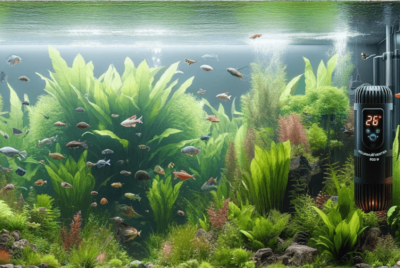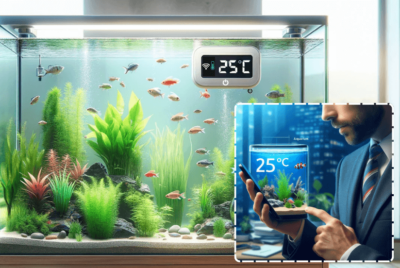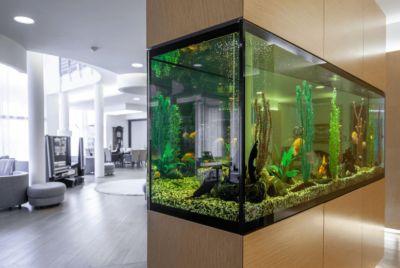The Pros and Cons of Self-Cleaning Fish Tanks: Is It Worth It?
The evolution of aquarium technology has brought the convenience of self-cleaning fish tanks to the forefront of the fishkeeping hobby. This modern innovation aims to streamline the maintenance process, allowing enthusiasts to focus more on the joy of nurturing aquatic life and less on the chores that come with it. With features designed to automate cleaning and water filtration, these tanks are changing the way we think about aquarium care. Yet, as we navigate through these advancements, it’s essential to weigh the benefits against the potential drawbacks. The question remains: do the advantages of owning a self-cleaning fish tank outweigh the initial investment and reliance on technology?
Self-cleaning fish tanks represent a significant leap towards simplifying the complexities of maintaining a healthy aquatic environment. They offer a solution to one of the most time-consuming aspects of fishkeeping—regular tank cleaning. By integrating systems that automatically remove waste and maintain water quality, these tanks promise a cleaner habitat for your fish with minimal effort on your part. However, understanding the mechanisms behind this technology and its impact on your aquatic pets is crucial. As we delve into the world of self-cleaning fish tanks, let’s explore the intricacies of these systems to determine if they’re the right choice for your fishkeeping journey.
Understanding Self-Cleaning Fish Tanks
Brief Overview of Self-Cleaning Fish Tanks
Self-cleaning fish tanks are the modern solution for busy fish enthusiasts. These tanks use innovative technology to automatically remove waste, keeping the water clean without frequent manual cleaning. Ideal for beginners and experts alike, they offer a hassle-free way to enjoy the beauty of aquatic life.
Importance of Understanding the Technology
Before diving into the world of self-cleaning aquariums, it’s crucial to understand how they work. This knowledge helps you choose the right tank for your needs and ensures your aquatic pets thrive. Plus, understanding the technology behind your tank can make maintenance even easier.
How They Work
Self-cleaning fish tanks utilize a combination of mechanical, chemical, and biological filtration. By cycling water through these filtration systems, they continuously remove waste and purify the water. Some models also feature automated feeding and water change systems, further reducing the need for hands-on maintenance.
Different Types Available
The market offers a variety of self-cleaning fish tanks, each designed to suit different preferences and needs. From compact, single-fish tanks perfect for desks and small spaces, to larger, community tanks capable of housing multiple species, there’s an option for every type of fish enthusiast. Understanding the features and capabilities of these types helps you find the perfect fit for your home or office.
The Pros of Self-Cleaning Fish Tanks
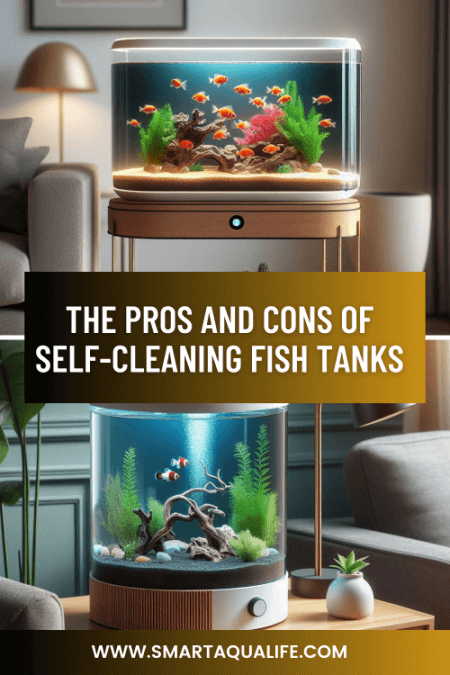
Low Maintenance
One of the top advantages of self-cleaning fish tanks is their low-maintenance nature. These tanks are designed to take the hassle out of fishkeeping, allowing you more time to enjoy the beauty of your aquarium without the constant upkeep.
Less Frequent Cleaning Required
Thanks to their advanced filtration systems, self-cleaning tanks require less frequent cleaning compared to traditional aquariums. This means you can say goodbye to the tedious task of regular water changes and gravel vacuuming.
Convenience
Self-cleaning fish tanks offer unparalleled convenience for aquarium enthusiasts. With features designed to automate the care of your aquatic environment, these tanks make fishkeeping accessible to everyone, regardless of their busy schedules.
Automated Systems
Many self-cleaning tanks come equipped with automated systems for feeding your fish and maintaining optimal water conditions. This automation ensures your aquatic pets are well-fed and living in a healthy environment, even when you’re not around to care for them directly.
Better Water Quality
The innovative design of self-cleaning fish tanks ensures a consistently high water quality, which is crucial for the health and longevity of your fish. By efficiently removing waste and toxins, these tanks create a safer, more stable environment for your aquatic pets.
Consistent Filtration
Self-cleaning tanks utilize consistent filtration methods to keep the water clean and clear. This continuous filtration process helps to prevent the buildup of harmful substances, ensuring your fish enjoy a clean and healthy habitat every day.
The Cons of Self-Cleaning Fish Tanks
Initial Cost
The upfront cost of self-cleaning fish tanks can be higher than that of traditional aquariums. While they offer significant benefits in terms of maintenance and convenience, the initial investment may be a consideration for some enthusiasts.
Comparison to Traditional Tanks
When comparing self-cleaning tanks to traditional ones, it’s important to consider the long-term savings in time and maintenance supplies against the upfront cost. While more expensive initially, self-cleaning tanks can offer cost savings over time.
Dependence on Technology
Relying on technology comes with its own set of challenges. Self-cleaning fish tanks, with their automated systems, can become a source of worry if the technology fails.
Power Failures and Malfunctions
Power outages or system malfunctions can disrupt the automated cleaning and feeding processes, potentially risking the health of your aquatic pets. It’s crucial to have backup plans in place for such scenarios.
Limitations in Fish and Plant Choices
Not all species of fish and plants are suitable for the conditions in self-cleaning fish tanks. The technology-driven environment may not be compatible with the needs of certain delicate species.
Suitable Species for Self-Cleaning Tanks
When choosing inhabitants for your self-cleaning tank, it’s important to select species known for their adaptability to these environments. Researching and selecting the right fish and plants will ensure a thriving aquatic ecosystem.
Is Self-Cleaning Fish Tank Worth the Investment?

Considerations for Hobbyists
Deciding to invest in a self-cleaning fish tank involves weighing your passion for fishkeeping against the practical aspects of cost and maintenance. Consider how much time and effort you’re willing to dedicate to your aquarium hobby.
Self-Cleaning Fish Tank: Long-Term Benefits vs. Costs
The long-term benefits of owning a self-cleaning fish tank, such as reduced maintenance time and healthier fish, often outweigh the initial cost. However, it’s crucial to evaluate whether these benefits align with your fishkeeping goals and budget.
Making Your Decision
Assessing Your Needs and Preferences
Every aquarium enthusiast has unique needs and preferences. Reflect on what’s most important to you: Is it the aesthetic appeal, the health of your fish, or the convenience of maintenance? Your priorities will guide your decision.
Resources for Further Research
Before making your final decision, take advantage of available resources. Online forums, product reviews, and expert advice can provide valuable insights into the best self-cleaning fish tanks to meet your specific requirements.
Enhancing Aquarium Care with Smart Technology
Smart aquarium technology revolutionizes the care of self-cleaning fish tanks. With automated monitoring and maintenance, these advanced systems ensure a healthy environment for your aquatic pets. Learn how real-time alerts and remote control options streamline fishkeeping, offering efficiency and simplicity. Explore the benefits of combining smart technology with self-cleaning mechanisms for an unmatched aquarium experience.
Conclusion
Investing in a self-cleaning fish tank marks a step towards a more manageable and rewarding fishkeeping journey. The combination of technological innovation and practical design brings forth an era where the beauty of aquatic life can be enjoyed with minimal hassle. The benefits, such as reduced maintenance time and improved water quality, cater to both the novice and seasoned aquarist. However, it’s important to weigh the upfront cost against the long-term savings in both time and resources. As you consider your options, think about how a self-cleaning tank fits into your daily routine and complements your passion for fishkeeping.
The choice to invest in a self-cleaning fish tank is a personal one, influenced by your specific needs and aspirations within the hobby. Whether you’re drawn to the idea for its convenience or its potential to provide a stable home for your aquatic friends, it’s crucial to research and select a system that aligns with your goals. By carefully considering your options, you can ensure that your investment not only enhances your fishkeeping experience but also supports the well-being of your aquatic pets. In the end, a self-cleaning fish tank could be the key to unlocking a more enjoyable and less labor-intensive approach to maintaining a beautiful aquarium.
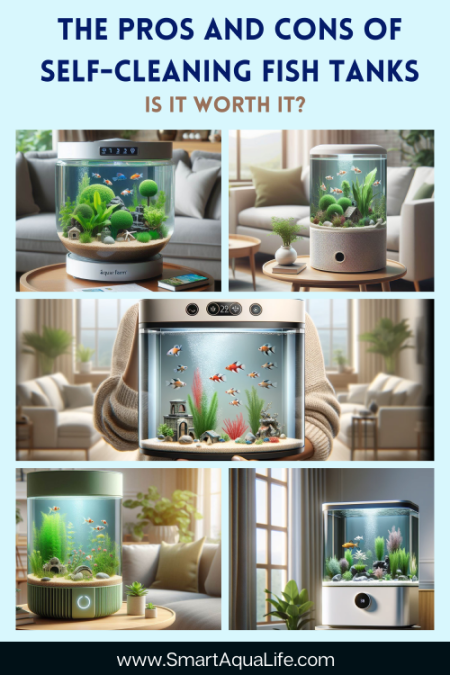
Self Cleaning Fish Tank FAQs
Q: What are the best self-cleaning fish tanks on the market?
A: The best self-cleaning fish tanks combine ease of use with efficient filtration. Top picks often feature brands like AquaFarm, Water Garden, and EcoQube. Each offers unique benefits, from stylish designs to advanced ecosystem setups. Do your research to find one that fits your lifestyle and decor.
Q: Can I keep any type of fish in a self-cleaning tank?
A: While self-cleaning tanks are versatile, not all fish species thrive in them. Opt for hardy species such as bettas, guppies, and tetras. These fish adapt well to the conditions self-cleaning tanks provide. Always consider the specific needs of each fish type before adding them to your tank.
Q: How often do self-cleaning tanks need maintenance?
A: Despite their name, self-cleaning tanks still require some maintenance. However, the frequency is less than in traditional tanks. Expect to check the system, top off the water, and perform a partial water change every few weeks to maintain optimal conditions.
Q: Are self-cleaning fish tanks suitable for beginners?
A: Yes, self-cleaning fish tanks are excellent for beginners. They reduce the learning curve associated with fishkeeping, making it easier to maintain a healthy aquatic environment. These tanks allow newcomers to focus more on enjoying their fish and less on the complexities of tank maintenance.
Q: What happens if the self-cleaning mechanism fails?
A: In the event of a self-cleaning mechanism failure, manual intervention may be necessary. Having a backup plan, such as a traditional siphon and knowledge of manual tank cleaning, is essential. Regularly check the system’s components to prevent or minimize failures.


